Many owners of diesel cars are anxiously awaiting winter frosts, since almost every one of them had to face the fact that the car would not start in subzero temperatures. The main reason for this is the thickening diesel fuel at negative temperatures. This nuisance comes in because of the formation of small paraffin particles in diesel fuel. However, if you apply the little tricks that experienced drivers use, you can figure out how to start a diesel engine in cold weather.
To diesel engine could easily start in a big frost, it is necessary to take into account such important factors:
- good and proven fuel;
- reliable battery;
- working starter;
- quality candles.
A prerequisite is also normal compression and serviceable injection system... When at least one of these points is inoperative or does not work well, the diesel engine will not start in frost. Before the cold weather arrives, it is necessary to check the engine operation in a good workshop. A fuming engine indicates a lack of power, uneven operation, or problems with compression. This is one of the main indicators that can characterize the entire operation of the motor.
The diesel engine is checked using a pressure gauge that is connected directly to the injector. Thus, it is checked operating pressure in the cylinder during operation crankshaft... If the car is new, then this figure should be at least 30-40 bar. If the pressure in the working cylinder is lower than 20 bar, then the start of the diesel engine in frost will definitely not take place. But this is more common on cars with high mileage where the engine is already exhausted. In this case, it is necessary overhaul motor or, as an option for winter, a warm, heated garage. In the warm season, even a heavily worn engine will start without problems.
Possible problems with the injector
In older cars with high mileage, the injector problem usually manifests itself when the car is started, power is also significantly reduced and fumes exhaust pipe... Such an engine starts to work too noisy, it kind of knocks with something metallic. If the car is new, then you can find out that the injector is inoperative by hard braking after pressing the gas pedal. The cost of repairing an injector varies depending on the year of manufacture of the car, the newer the car, the more expensive it will be to repair the injector.
Battery Disadvantages
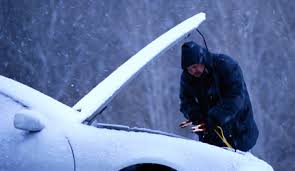
As practice shows, starting any diesel car is much more problematic than starting a car with gasoline engine the same power. Therefore, diesel engines are equipped with batteries and starters that are much more powerful. In winter, all defects of the batteries manifest themselves in a double size, since in severe frosts the need for the engine in electricity increases significantly. The fuel thickens from frost, the starters rotate more intensely, and the candles need to work longer. Usually, the more cold it is outside, the less battery power is. How to start a diesel engine in cold weather is becoming a major issue even for experienced car owners.
To avoid many problems in advance, you need to take a closer look at the work of the starter. If it does not work well or after a couple of attempts to start it up noticeably weakens, then you need to contact a specialist. The service station will check the performance of the battery and all parts of the car used to charge it. If you buy immediately new battery without checking the old one, it is often just a waste of money, perhaps the problem is not in it. The alternator or starter may be defective. The service life of modern batteries is three to five years.
Fuel and fuel filter problems
With a sharp drop in temperature, the tanks of most diesel cars are still filled with summer diesel fuel, which tends to thicken strongly at a temperature of zero degrees. Paraffin deposited in frost from such fuel can completely clog the fuel filter, this is one of the reasons for the impossibility of starting the diesel engine in frost correctly. If, for any reason, summer fuel was not used in time, a special additive, an antidepressant, must be poured into the tank. This will help to reduce the thickening parameters of the diesel fuel. Experts recommend changing the fuel filter before the onset of frost; in diesel engines, the filter design provides for a sump for collecting water, if a lot of liquid has collected in the sump, then it will freeze in frost and limit the flow of diesel fuel into the engine.
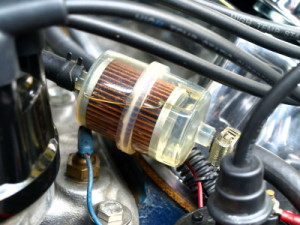
Most diesel owners think that trouble with a diesel engine plant in winter period are obtained from diesel fuel, which does not correspond to the season. There are only three types of diesel fuel:
- summer diesel fuel - used from zero degrees and more;
- winter diesel fuel - poured at negative temperatures up to minus thirty degrees;
- Arctic fuel - used in diesel vehicles at temperatures below minus thirty degrees.
The most important difference between all these grades is the fuel thickening temperature. If the fuel is filled for the season, then the use of special additives is not required. If all systems of the car are in good working order, the diesel will start in frost on the first try.
Malfunctioning candles
It is very rare that all car plugs fail at the same time. If the car is old and with high mileage, the driver may not even notice the malfunction of a separate candle, just when the engine starts up, the engine starts weaker and its operation is uneven for several seconds. In the fall, it is advisable to conduct an audit car candles and replace faulty items.
The performance of candles can be checked without contacting specialists. The element must be pulled out, the contact from the minus must be connected to the body, and the plus must be thrown onto the plug terminals. When the candle is working, its tube will instantly warm up. After a few seconds, it will fully heat up and it will glow.
Proven Diesel Starting Methods
A very reliable and proven way to ensure the correct functioning of the fuel structure of a diesel vehicle is to install a heating structure in the fuel tank, on the pipes and on the filter. It is very easy, although dangerous, to plant a diesel engine using a tug.

Passenger cars are equipped with a belt-type distribution system drive. When a tug is used, jerks are inevitable, this can lead to a break in the belt. The tug can only be used in desperate situations when the battery is dead or the starter is broken.
Here are some tips from experienced drivers:
- if the diesel engine starts in frost, it must be turned on for a few minutes high beam, then squeeze the clutch for a few seconds, and then give the starter a rest, this can help the diesel plant;
- you can add kerosene to the fuel, even with prolonged operation at subzero temperatures, such a composition does not affect the operation of the entire structure of a diesel engine;
- use additives that reduce the thickening temperature of diesel fuel;
- to quickly warm up a frozen diesel engine, you can put on a cover on the car and put a heat gun under the bottom. The temperature under the engine must be brought to at least zero degrees;
- if we start a diesel engine in frost, then for a quick plant, you can sprinkle ether into the air intake, you need to try to start the engine while the ether is in a sprayed state;
- another time-tested method from experienced diesel drivers. If the car does not want to start in cold weather, it is necessary to warm up the drain manifold. This can be done simply with a piece of paper and matches. The paper is set on fire and the collector is heated with the help of smoke, in this case the car starts up very quickly;
- you need to buy diesel fuel only at proven gas stations, saving on diesel fuel, you can spend a lot on repairs.
Conclusion
Diesel vehicles are popular due to their power and economy in operation. But for all these advantages, lovers of such cars suffer in winter frosts. Especially troublesome is the transition period from autumn to winter, it is at this time that there are frequent frosts, and the fuel in the car is mostly filled with summer fuel. So you have to spend hours trying to start your car. If you follow the advice of experts and closely monitor the machine, then even in severe frosts, such problems will not arise.
It is an actively discussed topic among the owners of cars that operate on diesel fuel in the cold season. With the onset of intense frosts, it becomes a frequent occurrence that a cold start of a diesel engine is difficult or completely impossible, a serviceable diesel engine is unstable or stalls on the move. Let's look for answers to the questions of what to do if the diesel engine does not start in winter, as well as how to start the diesel engine if diesel fuel is frozen in the tank.
Additives, fuel filter change, tank heating
Most often, it is impossible to start a completely serviceable one in the cold precisely because the diesel fuel in the diesel engine has frozen. Untreated diesel fuel thickens, becomes cloudy and paraffinized in fuel tank, filters and lines of diesel engines even at relatively low negative temperatures.
A clogged fuel filter is a common reason a diesel won't start in winter. The fuel filter of a diesel engine itself consists of thick paper, which is completely clogged with paraffin and the throughput is lost. Experienced diesel car owners always have a spare fuel filter in their trunk. Sometimes, just replacing it is enough to successfully start a diesel car in winter after an overnight stay.
There are also diesel cars with an unheated fuel filter. On such machines, the filter element can freeze right on the track with strong cold air blowing, even if high-quality winter diesel fuel is poured. Third party heating installation fuel filter and fuel line solves this problem.
How to start a diesel in cold weather

Complex measures for starting a diesel internal combustion engine with a strong and not very minus include preliminary filling the tank with warm fuel, to which an antigel additive has been added. Separately consider the proportions and recommendations regarding the addition of antigel to diesel fuel. Also remember that manufacturers of modern diesel internal combustion engines do not recommend, and sometimes even completely prohibit.
For simple diesel cars of the 90s, gasoline or kerosene can be added to diesel fuel, but if this is done with new turbodiesels, then the result is unpredictable, especially with gasoline. Sensitive fuel equipment is already afraid of additives, and with kerosene or gasoline in diesel fuel, it can completely fail. It should also be taken into account that an attempt to simply pour the additive into the tank with previously frozen diesel fuel will not bring results.
If the diesel fuel in the tank is frozen:
- be sure to send a construction / household hair dryer to the fuel filter;
- similarly direct a hairdryer to the gas tank for more effective heating;
- first, gently heat the diesel fuel canister to 60 - 70 degrees;
- then add the additive and pour the ready mixture into the fuel tank;
Replacing the fuel filter with a new one will speed up the process, and warm diesel oil with anti-gel should help start the diesel. If there is no hair dryer and it is not planned to replace the fuel filter, then you need to wrap the place where the filter is installed with a rag and pour hot water there. Likewise, you can pour hot water on the fuel tank. 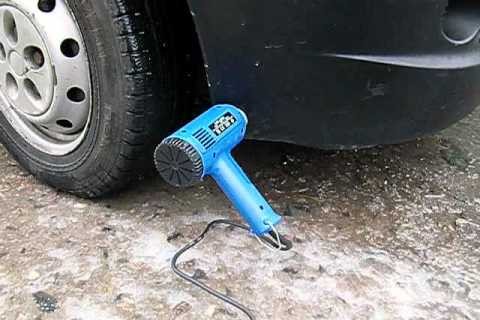
Kerosene as fuel for older diesel engines is also suitable. Its lubricity is much higher than that of gasoline. The harm to the fuel equipment of the old diesel engine is minimized (experts admit in extreme cases the addition of up to 25% kerosene to diesel fuel), which cannot be said about new diesel units.
As for the gasoline in the tank of a diesel car, it does not lubricate, so gasoline in diesel fuel is suitable for extreme cases. When diluting diesel fuel with gasoline, it will not be superfluous to additionally dilute this mixture with engine oil, which will perform the function of lubricating parts fuel pump diesel engine. We repeat once again, all these measures are extreme for new diesel engines.
After these procedures and a cold start in severe frosts, let the diesel engine run at idle for about 15 minutes to warm up. It is necessary to wait until warm fuel from the engine through the return line starts to enter the tank (the “return line” warms up). Only after that you can drive, eliminating the risk that your diesel engine will start to stall on the move after a few tens of meters.
Battery condition
Modern cars are oversaturated with electronics, so they sit down quickly, especially in winter. The diesel engine requires a powerful power source to warm up the glow plugs and start reliably. Monitor the battery status, service in advance, charge and replace the battery immediately if necessary.
Glow plugs

Glow plugs are no less common reason for diesel engine refusal to start in cold weather. If diesel internal combustion engine ok, then even at -5 the motor must start with one or two faulty glow plugs. At lower temperatures, starting a diesel engine with such spark plugs will be impossible.
The failure of the diesel glow plugs can be diagnosed by the delay at the moment the internal combustion engine sets. A cold diesel engine "troit" a little at the moment of starting and requires support from a starter. Inexpensive glow plugs are of poor quality and can fail literally in a season, so it's better not to save on them.
Use a simple method to start a diesel engine at low temperatures. It is enough to turn on the ignition several times before starting. This method helps warm up the glow plugs. Then you can start turning the starter. For old diesel engines, simultaneously pressing the gas pedal to the floor is also suitable.
Outcomes
It is quite obvious that when the diesel is frozen, it is better to warm up the car and try to start it in a warm box. But if you are sure that the problem is only in the battery, then you can try to start with the help of another car.
Attempts to "light" a diesel car involve certain risks in the form of a failure of electronic components, both in the car that is started and in the car that is the source of current. If there is an urgent need for such manipulations, then it is correct to use power cables with a large cross-section.
When it is decided to start the diesel with a tug, then try to start the engine no lower than from the third gear, and also release the clutch with the manual transmission as delicately as possible. We add that it is better to refrain from such methods of starting a modern diesel engine by "lighting" or towing at the slightest opportunity to separately recharge the battery or deliver a diesel car to a warm box without starting the internal combustion engine.
Many car owners find it useful to know how to properly start a diesel engine in cold weather. After all, the car park with such an engine is constantly growing. The efficiency of these units affects. At the same time, they have a fairly large power, according to this indicator, a diesel engine is much more efficient in comparison with gasoline counterparts of the same volume. It is for these reasons that diesel engines are gaining popularity. But, unfortunately, they have one significant drawback.
Due to their principle of operation and structural features, these power units are afraid of frost. Or rather, they are reluctant to start at low temperatures. There may be several reasons for this. In practice, the driver needs to know all these nuances. Then the chances of a successful motor plant increase markedly.
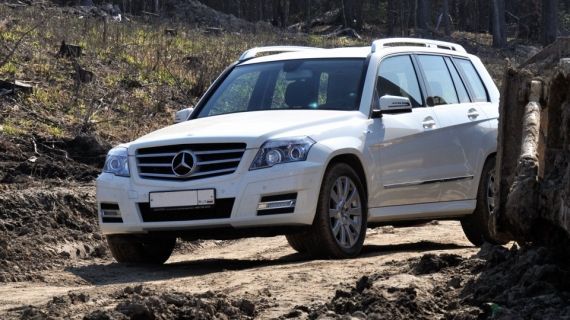
Peculiarities
How to properly start a diesel engine in cold weather? To answer this question, you need to consider the structure and principle of operation of this unit more carefully. All the reasons for the "bad behavior" of the engine in the cold can be found inside it. This is primarily fuel. The fact is that diesel fuel contains paraffins. They begin to precipitate as a precipitate already at 0 ° C; at lower temperatures, diesel fuel turns into a gel-like mass. In this state, the fuel simply cannot pass through the fine filter and enter the engine. Accordingly, the engine cannot start without fuel.
Another reason for the reluctant start of diesel engines at low temperatures is the way the fuel-air mixture is ignited. The fact is that, unlike gasoline units, where fuel is ignited with a spark, on diesel engines the ignition is catalyzed by the high pressure in the combustion chamber. Ignition occurs due to the heating of the mixture under high pressure.
In theory, the injected fuel, experiencing increased pressure, heats up to 800-900 ° C and flares up. But, in cold weather, the fuel is not able to warm up to such a temperature. Therefore, difficulties arise with starting a cold diesel engine. These factors must be taken into account both when preparing for winter and when problems arise.
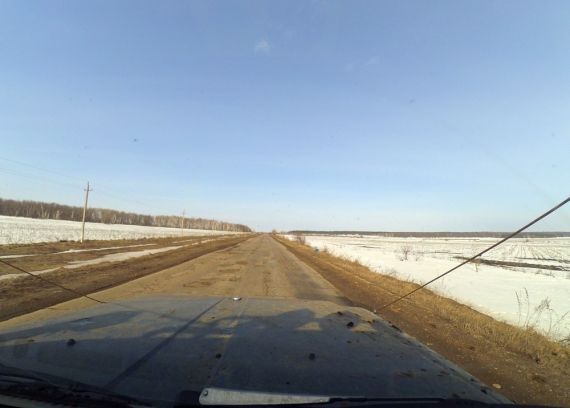
How to avoid the problem?
As you know, it is better to avoid illness than to cure it. This fully applies to a bad start. diesel units... It is much easier to take certain actions to avoid the situation. Than to arrange shamanistic rituals later, trying to start the car. To do this, first of all, fill up with special fuel intended for winter use... Diesel fuel is divided into 3 types:
- Summer fuel freezes already at -5 ° C, density no more than 860 kg / m3;
- Winter diesel fuel able to withstand frosts down to -35 ° C, its density is a maximum of 840 kg / m3;
- Arctic fuel is, in fact, heavy kerosene. It does not freeze at -55 ° C. Its density does not exceed 830 kg / m3.

Starting in November, gas stations have been selling the winter version of fuel, but there are some nuances here. Very often the rule is not to mix both types of diesel fuel. Usually, filling stations do not wait until the remainder of the summer fuel is drained and sold, but immediately poured the winter fuel into the tanks. As a result, a mixture of two types is sold.
Accordingly, the anti-freezing qualities of the resulting diesel fuel are significantly lower than the motorist expects. In this regard, at the very beginning of winter, it is better to use special anti-gel additives.
Also desirable. The most commonly used heaters are liquid fuel. The most famous heaters of this type are. Another equally popular way to heat the engine is electric heaters. Regardless of which type of heater you decide to use, they heat the engine around the combustion chamber. By increasing the temperature of the mixture, they contribute to its faster ignition.
Be sure to check the battery performance before winter. Replace it with a new one if necessary. There is such a thing as diesel batteries. They have a large starting current, strive to acquire just such.

We start the engine
And so, you decided to start your car on a frosty morning. Regardless of how reliably you are prepared for the winter, you still need to correctly start your car. The correct algorithm of actions will save you from unnecessary trouble. First of all, you need to warm up the battery. The most common mistake made by diesel owners is to warm up the battery, including the headlights. It is effective on gasoline units. On engines using diesel fuel as fuel, it is better to simply turn on the ignition for 10-15 seconds. This will warm up both the battery and the glow plugs located in the motor.
Some cars are now equipped with a "" button. On such models, there is a special mode for warming up the candles. To do this, hold down the button without pressing the brake, usually 6 seconds is enough. Wait until the illuminated icon on the instrument panel goes out. This indicates that the engine is ready to start.
Start the engine,. The engine is turned by the starter for about 15 seconds. This time is usually enough for the engine to start. If the launch failed the first time, then you need to wait a minute and try again.

If you still fail to start the car, in this way, then there are other emergency methods for starting the unit. First, check the condition of the fuel. , then the only option remains to tow the car to warm garage, for thawing. If everything is in order with the fuel, you can try to warm up the engine.
To do this, you will need a blowtorch and a piece of tin. Place a sheet of metal under the car and warm up the engine by directing the flame from the lamp to the iron. The main thing is to make sure that the flame does not touch the car. Heating should be done with warm air. You can also use the drug "quick start".
As a last resort, you can try to start the car from a tug. This method will help you start the car with a guarantee, but it is dangerous, especially for those engines that have a timing belt drive. But, if there are no other options, then you can use this method as well.
Conclusion... Winter is a difficult period for motorists. The car at this time of the year lies in wait for many dangers and difficulties. To avoid unnecessary problems, you need to know how to properly start a diesel engine in cold weather. After all correct operation power unit is able to significantly extend its service life.
a much higher temperature is required for launch, therefore more energy is required to achieve fuel detonation.
At the same time, paraffin crystals form in diesel fuel when the temperature drops, making it jelly-like with flakes, as a result of which it can no longer pass through the fuel filter normally.
For these reasons, the use of diesel cars at low temperatures is difficult, but if you still need a car, then there are several ways to facilitate the winter start of diesel engines.
- First of all, it is better to put on a diesel car high inrush current batterym and good energy consumption. This will help a lot when starting up. It is worth checking in parallel high voltage wires and glow plugs.
- High quality winter diesel fuel is also an important component. In Russia, it leaves much to be desired, many gas stations sell low-quality fuel, and often in winter there is summer or transitional fuel, which freezes already at -5 ° C. It is best to find one gas station with good fuel and always refuel on it. Moreover, not always a high price and an eminent brand mean a quality product.
- It is also useful to add when refueling antigel additive for diesel fuel. In this case, not even the best quality fuel will most likely be suitable for cold start. Also, this additive increases the lubricity of high-quality fuel of Euro 3, Euro 4 standards, which, due to the low sulfur content, loses its lubricity.
- Finally, we must not forget to switch to winter engine oil .
Starting a diesel engine similar to starting a gasoline engine, but there are also fundamental differences:
- Squeeze the clutch (so that the battery does not turn the box with the engine as well).
- Extend the choke (in diesel vehicles it is used only at start-up and does not affect the engine operating speed).
- Turn the key to turn on the electrical appliances, wait until the glow plug lamp goes out.
- If the car was standing in the cold, then before starting it is better to turn on the headlights and wait five minutes, it will not take a lot of energy, this will warm up the battery a little, which will provide the best starting current at the start. If it's freezing outside, you can take the battery home in the warmth at night.
- Turn on the ignition and turn the starter until the engine starts. On diesel cars, unlike gasoline ones, it makes no sense to use several short start attempts. When the machine starts to grip, you can add a little gas.
- When the engine starts, do not immediately release the clutch and remove the gas, let it run a little at normal working speed, then slowly remove the gas and release the clutch smoothly, then remove the choke.
If, nevertheless, it was not possible to start the car, then you can use cold start aids engine, they are sprayed into the air intake before starting, although it is not worth hoping for an impressive effect from them. It should be borne in mind that the frequent use of such funds can negatively affect the service life of the engine.
The above methods can help in temperatures down to -20 ° C, if it is -25 ° C outside, then it is better to refrain from traveling. If the car is often needed at temperatures of -20 ° C and below, then it is advisable to use pre-heaters .
There are two main options: fuel preheaters and engine preheaters.
- Fuel preheaters cheaper and together with the installation cost about 10 thousand rubles. They will help to cope with the problem of diesel fuel freezing in the cold, but they will not give other positive effects.
- Engine preheaters much more expensive, on average 30-35 thousand rubles, but they sell much great opportunities and efficiency. They allow not only to warm up the engine and engine compartment, but also to provide a comfortable temperature in the vehicle interior. With such a device, severe frost is not terrible.
In winter, starting the engine "cold" sometimes becomes an impossible task for motorists. Sometimes it takes a lot of effort to do this. But not every car owner has so much free time. But how can you avoid this situation? In today's article we will tell you how to properly start a diesel engine in winter. We will also consider tips, thanks to which you will not find yourself in such unpleasant situations so often.
Looking for a "common denominator"
How to start a diesel engine in cold weather? First, let's look at the reasons for the bad at low temperatures. Let's say right away that there are a lot of them. But most of them have a common denominator - liquids. Moreover, the lower the ambient temperature, the worse engines they will work.
In the case of a diesel engine, frost affects the fuel. With a rapid drop in temperature, it begins to thicken, due to which the composition of the liquid changes. As a result, the fuel is difficult to ignite or does not pass through the fine filter at all.
A battery is also associated with liquids, in which chemical processes are constantly going on (generation of electric current). And the lower the air temperature, the slower they occur.
Another reason for a poor start of a car on a diesel engine can be engine oil. It, like fuel, also tends to thicken. Thus, with a decrease in temperature, the movement of rubbing parts of the KShM becomes more complicated. It is even worse if the oil film breaks or disappears altogether. Then a major overhaul power plant inevitable.
How to start a diesel in winter? First start
If your vehicle does not start the first time, no need to panic. This process should last no more than 15 seconds. After that, turn the key to its original position and let the battery "rest" for one or two minutes. Ideally, the car should start with a maximum of 3 attempts. If your car still does not start, under no circumstances repeat this process over and over again. This will only impair the performance of the starter and drain the battery.
Starting by "lighting" method
In winter, always keep ready-made cables "in reserve". Thanks to them, you can start the car quickly. You can be assisted not only by an acquaintance, but also by any friendly driver passing by you.  If the car can be started by the "lighting" method, it can safely go on. But it is worth noting that you should not turn off the engine immediately after ignition. Let the battery fully "saturate" with electricity after driving at least 5 kilometers. Better yet, let the engine run for about an hour. In this case, it will definitely renew its charge and at the next start it will give a normal
If the car can be started by the "lighting" method, it can safely go on. But it is worth noting that you should not turn off the engine immediately after ignition. Let the battery fully "saturate" with electricity after driving at least 5 kilometers. Better yet, let the engine run for about an hour. In this case, it will definitely renew its charge and at the next start it will give a normal
Use of additives and antigels
So, we have frozen her, if not close suitable car, from which it would be possible to "light a cigarette"? Then welcome to the world of additives and antigels. Fortunately, finding them is not difficult, even in small towns. Often, car enthusiasts prefer such well-known manufacturers as Liquid Moli, Khado and Castrol. Due to their composition, they do not allow the paraffin contained in diesel fuel to multiply in full. The fact is that when the temperature drops, this fuel begins to grow cloudy, forming a special sediment. Because of it, diesel fuel does not enter the combustion chamber, getting stuck in the walls of the filter. 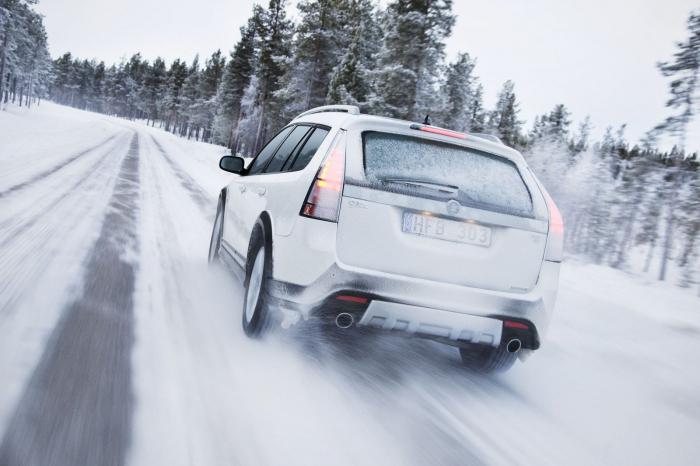
Note also that additives and antigels do not dissolve paraffin in liquids, they only retard its growth with the next decrease in temperature. But, as practice shows, this is quite enough to start a diesel engine in 40-degree frost. True, for this you need to know how to use the antigel correctly. And it is poured into the tank at temperatures above 0 ... + 1 degrees Celsius. In this case, the tool brings real benefits to the engine.
Nuances of antigels
Modern automakers do not recommend the use of additives in fuels. This applies to TDI, HDI and CDI engines. This prohibition is explained by the complexity of the design of the fuel equipment. But car enthusiasts say that with careful and moderate use, the additive does not cause any harm to diesel installations. 
When using antigels, it is important to pay attention not only to the ambient temperature, but also to what proportion you need to add liquid to the tank. Manufacturers indicate this information on labels.
What if the diesel fuel is already frozen?
How to start a car in winter if the fuel is already frozen? Of course, already frozen diesel oil, full of paraffins, cannot be “revived”. The only way is to pour it into a canister and heat it to a temperature of 60-70 degrees Celsius. Then add a few milliliters of antigel and pour the resulting substance into the tank. But before starting the car in winter, motorists are advised to first install a new fuel filter.
Details about kerosene
Experienced drivers do not trust various new products in the form of antigels and additives and usually prefer to dilute diesel fuel with kerosene. In practice, the result is the same, and this method can be used not only on old engines. Kerosene has a high lubricity, so it does no harm. Experts recommend diluting diesel fuel with this fuel in a proportion of no more than 30 percent, that is, for 100 liters of diesel fuel, a maximum of 30 liters of kerosene.
Petrol
But this type of petroleum products should be completely deleted from the list of used "heaters" for diesel engines. The fact is that gasoline, unlike additives and kerosene, has no lubricity. And this means that while the motor is running, the injection pump will pump liquid "dry". Therefore, before starting a diesel engine in cold weather in this way, remember that repairing fuel equipment can cost from 200 to 500 Euros. As a last resort, it is recommended to dilute the gasoline with oil.
Glow plugs
Before starting a diesel engine in winter, you need to thoroughly warm up the candles. How to do it? First you need to turn the ignition key, then wait until a light bulb in the form of a spring appears on the instrument panel. Most often it is yellow or red (you can see it in the photo below). 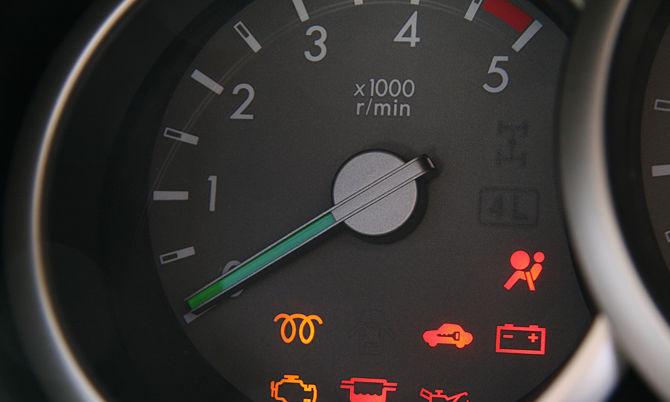 After a couple of seconds, it disappears, informing that the fuel has warmed up sufficiently. After that, return the ignition key to its original position. To fully warm up the glow plugs, you must repeat this procedure several more times with an interval of 2-3 seconds. The fact is that foreign manufacturers do not quite know what kind of low temperatures their cars have to face in Russia, especially in the northern regions. During this period, the fuel mixture is simply not able to warm up normally, therefore, this procedure should be repeated with key turns more than once.
After a couple of seconds, it disappears, informing that the fuel has warmed up sufficiently. After that, return the ignition key to its original position. To fully warm up the glow plugs, you must repeat this procedure several more times with an interval of 2-3 seconds. The fact is that foreign manufacturers do not quite know what kind of low temperatures their cars have to face in Russia, especially in the northern regions. During this period, the fuel mixture is simply not able to warm up normally, therefore, this procedure should be repeated with key turns more than once. 
Also, before starting the diesel engine in cold weather, it is recommended not to remove the car from the gear, but to squeeze the clutch all the way (applies to cars with manual transmission). The fact is that in winter transmission oil tends to stagnate, that is, removing the machine from gear, you force the discs and gears to slide without lubrication.
The car was frozen. How to start it "from the pusher"?
Unfortunately, this method cannot be used on vehicles with such engines.
The reason for this is the timing belt, which can break or jump a few teeth forward. Therefore, any attempt to start a diesel engine "from the pusher" in most cases turns into costly repairs.
Of course, it is best to prevent these occurrences. For this we recommend:
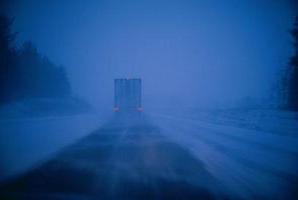
So, we figured out how to properly start a diesel engine in winter. We hope you find the tips above helpful. Good luck on the road!


